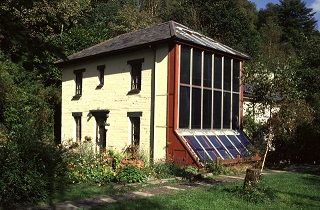What Is The Next Chapter Of Green Building?

So, how can we move from this bad office-habits onto better ones? Here’s an inspiring study that’s been recently published: Health, well-being and productivity in offices: The next chapter for green building. The study features range of factors – from views of nature and interior layout to air quality and lighting, exploring their effects on workers’ health, job performance and ultimately their overall satisfaction.
The study is pretty extensive and findings include: Indoor air quality, thermal comfort, lighting and views of nature, noise and acoustics, interior layout, active design and exercise. The study also touches upon financial, perceptual and physical metrics.
The findings are actually pretty interesting, educational and suggestive of what measures should be taken.
The research explains that better indoor air quality, with high ventilation rates and low concentrations of pollutants and CO2 are likely to lead to productivity improvements of 8-11%. The lighting and views (of nature) play a significant role in productivity, too. It appears that the closer a worker is to a window with natural light and a view on nature, the higher his/her productivity will be. It is not established whether this has to do with the mere connection with nature or with the natural (sun)light, but whichever the reason, it is an amazing finding yet not such a shocking one. After all-we were born from nature and therefore designed to be one with it. What further turned out to be an important factor is thermal comfort – it impacts overall workplace satisfaction! I’m proud to say that my company really takes care about workplace satisfaction, and also enjoys in benefits from such kind of attitude.
How often have you been distracted by the noise coming from your colleagues’ offices or wherever? Way too often, probably. Research has pointed out that the noise we live and work with provides an unwanted distraction and that productivity in such conditions is almost impossible. Lack of conditions to concentrate leads to poor results at a workplace which then results in workers’ dissatisfaction.
You’d think all creativity, concentration, a degree of collaboration and confidentiality you bring to your workplace depends just on you, right? Well, apparently that’s not quite the case. Turns out the way the interior of an office is set (including breakout space and social space, configuration of work space and workstation density) influences the four features mentioned. Naturally, this is related to exercise and active design of a workplace. We all know that the best way to improve our health is through organic food and exercise but the new finding is that, when it comes to office environments, active design within a building as well as the access to services and amenities such as green space, bicycle storage and gyms encourages healthier lifestyles of all those using (spending time) the building.
Toolkit to measure health, wellbeing and productivity of a company is essential to understanding functioning of a certain company.
Perceptual metrics test a range of self-reported attitudes into productivity, wellbeing and health, in the workplace. They can contain information that can help office performance improvement. As for financial metrics, they deal with staff turnover, revenue breakdown (by department or per building), absenteeism, physical complaints as well as medical costs and complaints. A third kind of metrics is physical metrics. “Direct measures of the physical office environment, such as temperature, are a key to measuring the effect on the health, wellbeing and productivity of workers.”
How do you feel these findings will influence further green building and office developments?
